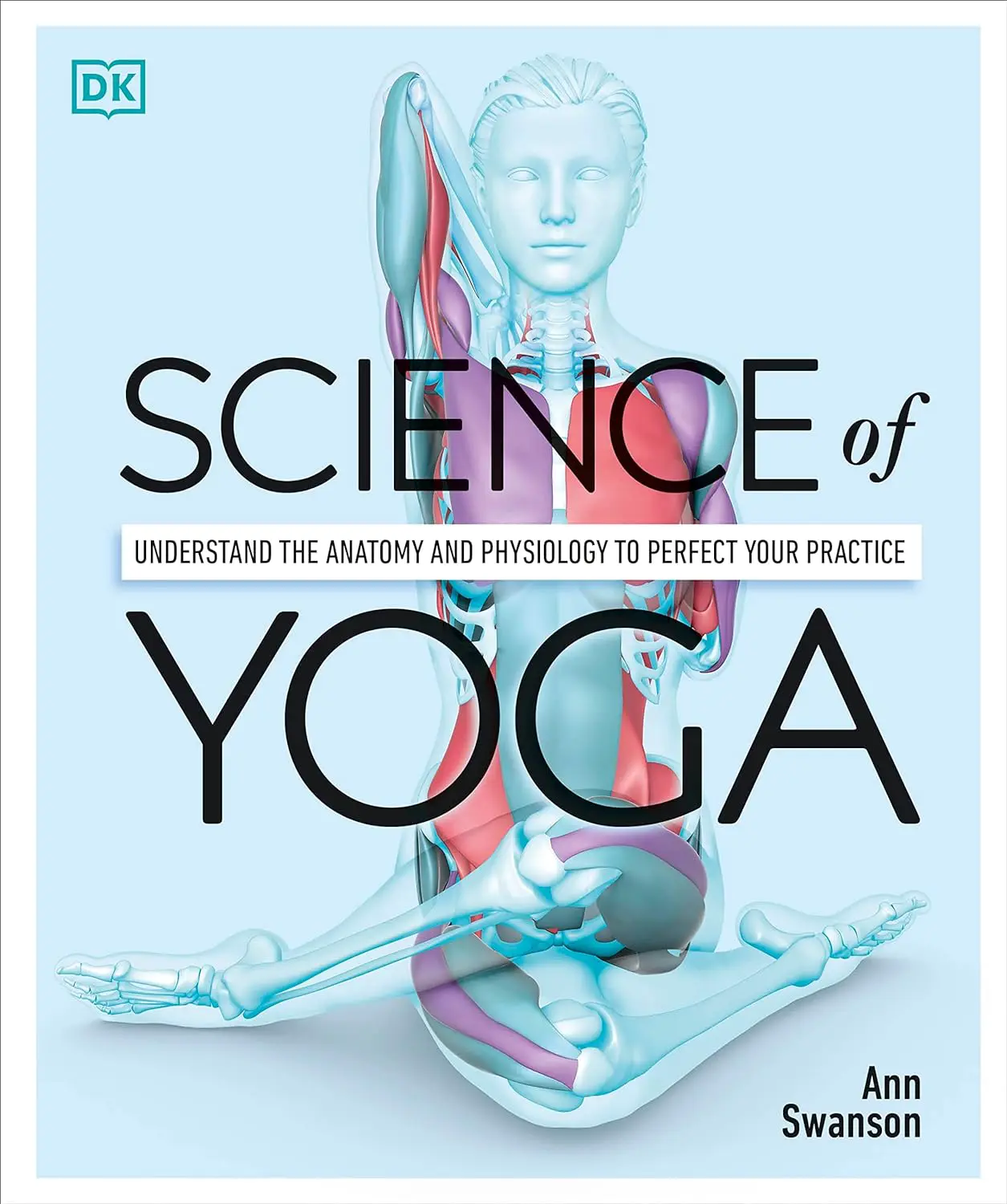Who Invented Yoga? The History Behind This Ancient Practice

Looking for more amazing products? Check out our online store and explore our collection here! Happy shopping!
Before diving in, please note: This post is for informational purposes only. If you’d like to know more about how we approach topics, feel free to check out our friendly Disclaimer Page.
Hey there, amazing readers! 
We’re committed to delivering quality posts, and your support (even just sticking around despite the ads) means everything to us. So, bear with us, and thanks for helping us keep the good vibes rolling. Now, on to the fun stuff!
TRANSLATE BUTTON AT THE END OF THE ARTICLE
A Quick Overview
Yoga is more than just a physical exercise; it’s a philosophy, a way of life, and a gateway to spiritual growth.
But have you ever wondered who first introduced this ancient practice?
Dive into the fascinating history of yoga as we trace its origins, evolution, and its remarkable journey across cultures and time.
By the end of this exploration, you’ll have a deeper understanding of the roots of yoga and its significance today.
Unraveling the Origins of Yoga: A Journey Through Time
Yoga’s history spans thousands of years, and it’s fascinating to look back at its origins.
This practice began in the shadows of ancient Indian civilization, evolving through various stages.
The earliest evidence of yoga can be traced back to the Indus Valley Civilization, around 3000 BCE.
Archaeologists discovered seals depicting figures in yoga poses, hinting at a spiritual practice.
Fast forward a few centuries, and we see yoga concepts appearing in ancient texts.
The Vedas, which are some of the oldest sacred scriptures of Hinduism, begin to discuss the ideas that would later shape yoga philosophy.
Meditation and contemplation became key themes.
But yoga wasn’t confined to just one region.
As ideas traveled, they morphed and adapted.
The spread of yoga to various parts of Asia over the centuries allowed for a rich tapestry of practices to emerge.
Different cultures embraced and integrated yoga into their spiritual and philosophical systems.
Throughout this journey, various sages and practitioners left their mark.
The stories of these figures weave together to form a narrative that reflects humanity’s quest for understanding the mind-body connection.
It’s a journey filled with curiosity, exploration, and a profound desire for enlightenment.
Ancient Roots: The Birthplace of Yoga in India
India is often regarded as the cradle of yoga, where it blossomed amidst the rich cultural and spiritual landscape.
From the sacred rivers to the soaring Himalayas, the environment of India has always fostered a deep connection to nature and spirituality.
The early practitioners of yoga sought answers to life’s most profound questions.
They turned to meditation and physical practices to cultivate both mental clarity and spiritual insight.
The emphasis on harmony between body, mind, and spirit became a hallmark of yoga’s essence.
Key locations like the banks of the Ganges and the caves of the Himalayas became sacred sites for practitioners.
It’s here that many ancient yogis sought solitude and deep contemplation.
The natural beauty of these landscapes played a crucial role in their spiritual journeys.
Additionally, the teachings of various Indian philosophies, such as Samkhya and Vedanta, started to intertwine with yoga, adding layers to its practice.
The philosophy underscored the importance of self-discovery and enlightenment, setting the stage for what we know as yoga today.
The Sacred Texts: Yoga’s Foundations in the Vedas
The Vedas, the oldest sacred texts of Hinduism, are crucial to understanding yoga’s foundational principles.
Composed around 1500-500 BCE, these texts include hymns, rituals, and philosophical ideas.
They provide insights into the spiritual practices and beliefs of ancient India.
Within the Vedas, yoga is not explicitly defined, but the ideas of meditation and self-discipline are prevalent.
The emphasis on connecting with the divine through disciplined practice laid the groundwork for later interpretations of yoga.
One of the most significant contributions from the Vedas is the concept of "yuj," which means to unite or join.
This idea embodies the essence of yoga—the union of the individual self with the universal consciousness.
The Vedas established a framework through which future yoga practices could be developed.
Over time, these texts inspired further exploration of spirituality, ethics, and physical practice.
Different schools of thought emerged, enriching the practice and leading to the creation of new texts that would define yoga.
Patanjali: The Sage Who Systematized Yoga Philosophy
Patanjali, often referred to as the father of modern yoga, played a pivotal role in shaping the philosophy we recognize today.
His most influential work, the "Yoga Sutras," was composed around the 2nd century BCE.
In these 196 aphorisms, Patanjali distilled the essence of yoga into a coherent system.
One of the most profound aspects of the Yoga Sutras is the eightfold path (Ashtanga) outlined by Patanjali.
This path consists of ethical precepts, physical practices, and meditation techniques designed to guide practitioners toward enlightenment.
Each limb serves as a step on the journey, emphasizing the importance of both inner and outer discipline.
Patanjali’s insight helped demystify yoga, making it accessible to a wider audience.
He emphasized that yoga is about personal experience and transformation rather than just physical achievement.
The practical guidance provided in the Sutras remains relevant, offering a roadmap for millions today.
His teachings inspired countless generations of yogis, leading to diverse interpretations and practices.
Patanjali’s influence is seen not only in Hinduism but also in other spiritual traditions influenced by Indian thought.
Yoga Sutras: Unlocking the Secrets of Mind and Body
The Yoga Sutras of Patanjali are a treasure trove of wisdom that continues to resonate with practitioners worldwide.
These aphorisms offer practical guidance on the mind-body connection, emphasizing that clarity of mind is essential for self-realization.
One of the central themes in the Sutras is the idea of "Chitta," or consciousness.
Patanjali explains that the distractions of the mind can hinder our spiritual growth.
By practicing yoga, we can calm the fluctuations of the mind, leading to a state of balance and clarity.
The Sutras also introduce concepts like "Pratyahara," which is the withdrawal of the senses, and "Dhyana," or meditation.
These elements highlight the importance of introspection and self-awareness in the practice of yoga.
They encourage practitioners to look inward and cultivate a strong connection with their inner selves.
Moreover, the Sutras provide ethical guidelines that govern a yogi’s conduct.
The principles of non-violence, truthfulness, and contentment serve as foundational virtues that enhance the practice.
By embodying these principles, practitioners create a harmonious environment for growth.
In essence, the Yoga Sutras serve as a manual for living a meaningful life.
They remind us that yoga is not just about the poses; it’s about nurturing our relationship with ourselves and the world around us.
From Spiritual to Physical: The Evolution of Yoga
As yoga spread beyond India, it began to evolve into various forms, incorporating elements from different cultures and traditions.
Initially, yoga was primarily a spiritual practice focused on meditation and self-realization.
However, as it gained popularity, particularly in the West, the emphasis shifted towards physicality.
During the late 19th and early 20th centuries, key figures like Swami Vivekananda introduced yoga to a broader audience, emphasizing its holistic benefits.
The physical postures (asanas) gained prominence as people became increasingly interested in health and fitness.
The 20th century witnessed the birth of many styles of yoga, including Hatha, Ashtanga, and Iyengar.
Each style brought its own unique focus, blending traditional practices with modern sensibilities.
This evolution catered to diverse needs, making yoga accessible to everyone, regardless of their spiritual beliefs.
The globalization of yoga also sparked the fusion of Eastern and Western philosophies.
Many practitioners began to explore mindfulness and meditation techniques, leading to a wider understanding of the mental and emotional benefits of yoga.
Today, yoga encompasses a broad spectrum, from rigorous physical practices to gentle restorative sessions.
This transformation reflects a growing recognition of the interconnectedness of body, mind, and spirit, ensuring that yoga remains relevant in our fast-paced world.
The Influence of Buddhism on Early Yoga Practices
Buddhism, emerging around the 5th century BCE, significantly impacted the development of yoga.
Many early Buddhists shared common ground with yogic philosophies, particularly in their emphasis on meditation and mindfulness.
The concept of "Dhyana" or deep focus, central to both traditions, fostered a rich exchange of practices.
Early yogis and Buddhists sought similar goals: liberation from suffering and enlightenment.
They explored the nature of consciousness and developed techniques to cultivate awareness.
Some practices, such as breath control (Pranayama), were integrated from yogic traditions into Buddhist meditation techniques.
This blending allowed for a richer experience in both disciplines, enhancing the depth of spiritual exploration.
As Buddhism spread across Asia, it also influenced various forms of yoga.
The mindfulness practices of Buddhism found a home in different yogic styles, encouraging practitioners to cultivate a deeper sense of presence.
This interchange of ideas showcased the adaptability of yoga, demonstrating its ability to absorb and grow from other philosophical traditions.
The legacy of this cross-pollination continues to thrive, enriching the experience of yoga today.
Hatha Yoga: A Revolution in Mind-Body Connection
Hatha Yoga, which emerged around the 11th century, marked a significant shift in the practice of yoga.
Unlike earlier forms that focused predominantly on the spiritual aspects, Hatha Yoga emphasized a balanced approach that integrated physical postures with breath control.
The term "Hatha" means force, symbolizing the effort required to unite opposites: the sun (Ha) and moon (Tha).
This philosophy encourages practitioners to find harmony within themselves, bridging the gap between body and spirit.
Hatha Yoga popularized physical postures, inviting people to experience the benefits of yoga through movement.
It laid the groundwork for various styles we see today, such as Vinyasa and Power Yoga, each offering a unique take on the practice.
The physical aspect of Hatha Yoga allows for a powerful connection between body and mind.
As practitioners move through poses, they cultivate awareness, strength, and flexibility.
This physical engagement also promotes emotional well-being, making yoga a comprehensive practice for overall health.
Hatha Yoga opened the door for many to explore the spiritual dimensions of yoga, even if they initially approached it for its physical benefits.
The practice encourages self-discovery and fosters a sense of community among practitioners.
The Global Spread of Yoga: East Meets West
Yoga’s journey from the banks of the Ganges to the streets of New York is nothing short of remarkable.
The late 19th and early 20th centuries witnessed a surge of interest in Eastern philosophies in the West.
Influential figures, such as Swami Vivekananda and Paramahansa Yogananda, played significant roles in introducing yoga to Western audiences.
As more Westerners began to embrace yoga, they sought not only physical benefits but also spiritual growth.
Yoga studios began popping up, catering to a growing demand for holistic wellness practices.
This marked the beginning of yoga’s transformation into a mainstream phenomenon.
Cultural exchanges flourished, leading to innovations in teaching methods and styles.
Western yoga instructors developed unique approaches, blending traditional practices with contemporary fitness trends.
This fusion created new ways for people to connect with yoga, irrespective of their cultural backgrounds.
Today, yoga is often used as a tool for stress relief, relaxation, and personal development.
It has transcended its spiritual roots to become a beloved practice embraced by millions across the globe.
The universal appeal of yoga lies in its ability to adapt and evolve, remaining relevant in modern society.
Yoga in the Modern Era: Trends and Transformations
The 21st century has seen yoga evolve in ways we could hardly have imagined.
With the rise of technology, online classes and virtual workshops have made yoga more accessible than ever.
People can now practice from the comfort of their homes, connecting with instructors worldwide.
Moreover, the wellness industry has embraced yoga, integrating it into various health and fitness regimes.
You’ll find yoga classes in gyms, wellness retreats, and even corporate offices, highlighting its broadening appeal.
New styles continue to emerge, with trends like aerial yoga, goat yoga, and even beer yoga capturing public interest.
These quirky variations reflect our culture’s playful approach to wellness, allowing people to engage in yoga in unexpected ways.
Despite these transformations, the core principles of yoga remain intact.
It continues to promote mindfulness, self-care, and community.
The teachings of compassion and self-awareness resonate with practitioners, encouraging personal growth and connection with others.
Yoga has also become a movement for social change, with many practitioners advocating for mental health awareness and environmental sustainability.
This modern wave of yoga champions inclusivity and diversity, making the practice accessible to all.
Celebrating Diversity: Different Styles of Yoga Today
Yoga has branched out into a myriad of styles, each offering its own unique philosophy and approach.
From the energetic flow of Vinyasa to the gentle stretches of Yin Yoga, there’s a style for everyone.
Hatha Yoga: The foundation of many styles, focusing on physical postures and breath control.
Ashtanga Yoga: A rigorous, dynamic practice linking breath and movement in a set sequence.
Iyengar Yoga: Emphasizes alignment and precision in poses, often using props for support.
Bikram Yoga: Practiced in a heated room, featuring a series of 26 postures to promote flexibility.
Yin Yoga: A slow-paced style focusing on deep connective tissues and long-held postures for relaxation.
Each style offers something different, catering to diverse preferences and goals.
This diversity allows practitioners to explore and find what resonates with them personally.
What’s truly exciting is the growing trend towards blending styles.
Many practitioners now mix elements from various forms, creating a personalized approach that suits their individual needs.
This adaptability is one of yoga’s greatest strengths.
At its core, yoga celebrates individuality while fostering a sense of community.
Practitioners come together to share experiences, support each other, and deepen their understanding of this ancient practice.
The Future of Yoga: Tradition Meets Innovation
As yoga continues to evolve, the future holds exciting possibilities.
The intersection of technology and tradition is creating new avenues for exploration.
Virtual reality yoga, for instance, offers immersive experiences that allow practitioners to engage in unique environments.
Moreover, the emphasis on mental health is likely to deepen.
As society becomes increasingly aware of the importance of mental wellness, yoga’s role as a therapeutic tool will expand.
Workshops focused on mindfulness and stress relief will become more prevalent.
Inclusivity will also shape the future of yoga.
Efforts to make yoga accessible to marginalized communities are gaining traction.
Initiatives promoting diversity within yoga spaces will continue to grow, allowing for a richer tapestry of voices and experiences.
Additionally, there’s a growing interest in integrating yoga with other wellness practices, such as mindfulness and nutrition.
This holistic approach will resonate with those seeking comprehensive well-being, encouraging individuals to embrace a balanced lifestyle.
The beauty of yoga lies in its adaptability.
It reflects the changing needs of society while honoring its rich traditions.
As we move forward, yoga will likely continue to inspire, heal, and connect people across cultures and generations.
Conclusion
The history of yoga is a fascinating tapestry woven from ancient traditions, philosophical insights, and modern adaptations.
Its journey from the banks of the Ganges to studios around the globe is a testament to its enduring relevance.
Yoga invites us to explore the depths of our being, fostering a sense of connection with ourselves and the world.
Whether you’re a seasoned practitioner or just starting your journey, understanding the rich history of yoga can deepen your practice and appreciation.
So, roll out your mat, breathe deeply, and embrace the wonder of yoga—a practice that has stood the test of time and continues to evolve with us.

The Enlightenment Journey is a remarkable collection of writings authored by a distinguished group of experts in the fields of spirituality, new age, and esoteric knowledge.
This anthology features a diverse assembly of well-experienced authors who bring their profound insights and credible perspectives to the forefront.
Each contributor possesses a wealth of knowledge and wisdom, making them authorities in their respective domains.
Together, they offer readers a transformative journey into the realms of spiritual growth, self-discovery, and esoteric enlightenment.
The Enlightenment Journey is a testament to the collective expertise of these luminaries, providing readers with a rich tapestry of ideas and information to illuminate their spiritual path.
Our Diverse Expertise
While our primary focus is on spirituality and esotericism, we are equally passionate about exploring a wide range of other topics and niches 

To ensure we provide the most accurate and valuable insights, we collaborate with trusted experts in their respective domains 
Our blog originally focused on spirituality and metaphysics, but we’ve since expanded to cover a wide range of niches. Don’t worry—we continue to publish a lot of articles on spirituality! Frequently visit our blog to explore our diverse content and stay tuned for more insightful reads.
Hey there, amazing reader! 
Check out our store here and take a peek at some of our featured products below! Thanks for being awesome!











